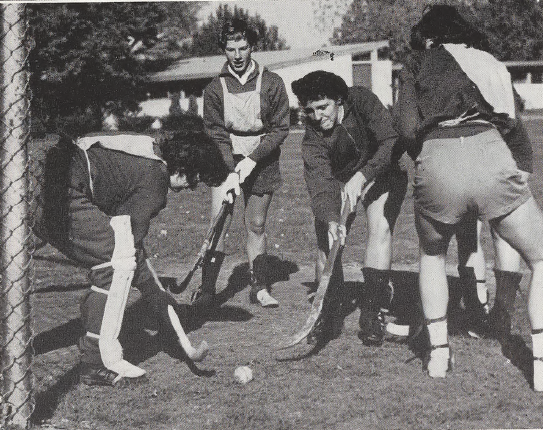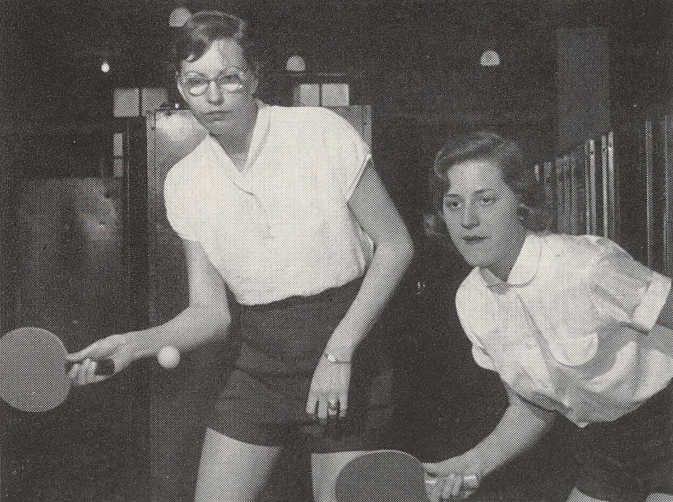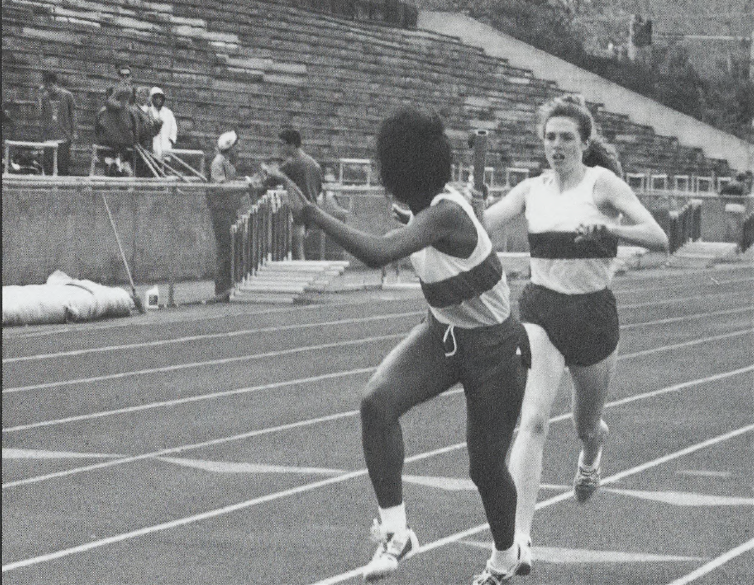By Matt Hampton | March 21, 2024
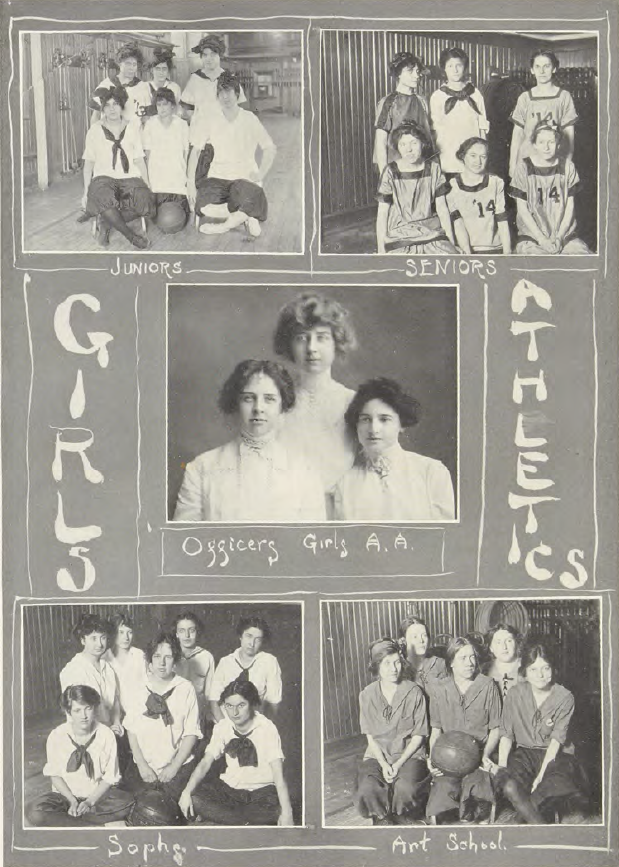
In the earliest years of sports at WashU, women had to compete against high-school teams due to a lack of college-level competitors. There is little documentation of the early years of women’s sports, but according to the athletics website, around the year 1900, a few activities existed, including physical conditioning, “modern” dance, and a small selection of sports. The first documented varsity team, basketball, dates to 1909, and a Woman’s Athletic Association was founded in 1911. Early sports in the athletic association included baseball, track, field hockey, basketball, and swimming.
At this time, women’s athletics primarily manifested in physical education classes and intramural sports, rather than varsity competition, but nonetheless was a popular source of recreation, socialization, and exercise. Yearbooks tell of regular competitions between the four undergraduate classes, between alumni and current students, or between campus sororities. According to the 1935 Hatchet yearbook, 75% of female undergrads competed in sports in some way, a number that remained as high as 70% in 1940 and 1950. Athletics diversified through the early-to-mid 20th century, with women participating in activities including boating, bowling, archery, riflery, bridge, horse-riding, badminton, table tennis, and fencing. A skating club called the Icicles was at one point the largest women’s sports group on campus, and a synchronized swimming team, the Mermaids, competed in intercollegiate meets and performed the annual Water Carnival, an event featuring synchronized swimming numbers for which “suitable background was provided by skillful lighting, music, and colorful bathing suits” according to the 1946 yearbook. Swimming and diving numbered among the main campus varsity teams, which were referred to as the Bruinettes in the pages of the Hatchet, and the School of Nursing also competed in intercollegiate basketball and volleyball.
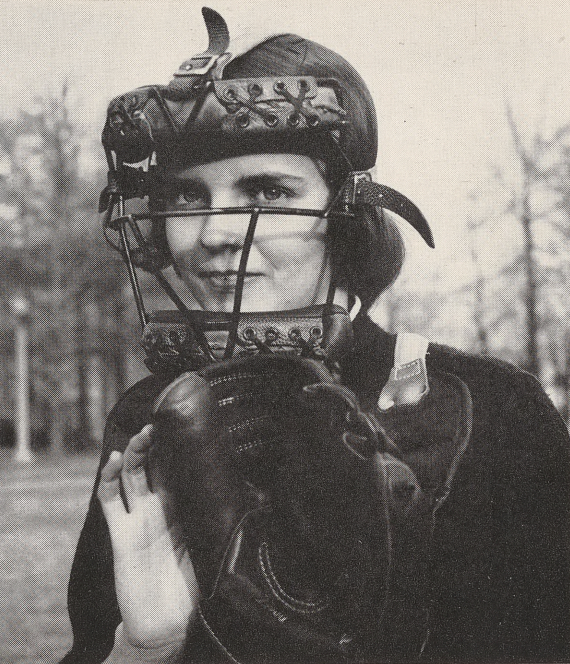
However, the women’s intercollegiate program was disbanded following the 1955 season for unknown reasons. Intramural sports continued to compete.
In 1975, with increased funding from Title IX of the Higher Education Act of 1972, women’s athletics began again with three varsity teams: swimming, tennis, and volleyball. Outdoor track and field joined the roster in 1977.
Director of Athletics John Schael joined WashU the following year and was pivotal in revitalizing women’s sports. That year, only 41 women participated in varsity athletics, according to the Record, the university’s newsletter. But participation grew, as did the number of sports. During the 36 years Schael worked at WashU, he added six new women’s teams: cross country, basketball, indoor track and field, soccer, softball, and golf.
In 1977-78, men’s and women’s sports became housed under the same department, laying the groundwork for equality between the two programs. Soon, female teams achieved equal access to the training room and equipment room, two female full-time coaches were hired to coach in the women’s program, and all women’s coaches became full-time staff.
By this time, the Bears were part of NCAA Division III. In this environment, women’s teams went on to achieve significant success.
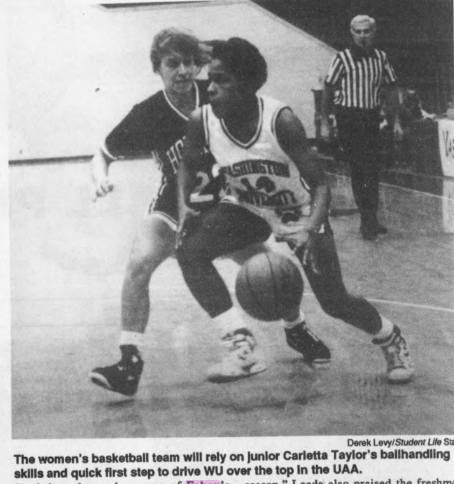
Prominent among them was basketball. One illustrious leader was Nancy Fahey, who coached the team from 1986 to 2017 and was named Women’s Basketball Coaches Association Division III coach of the year twice. She led the team to four straight national titles from 1998-2001 (and a fifth in 2010), an 81-game winning streak (the longest in NCAA history at the time), and five final-four finishes.
In terms of national championships, volleyball is the most decorated women’s team. A lot of this success occurred under the 14-year leadership of Teri Clemens. When she became head coach in 1984, she pledged to bring the team its first championship within 5 years, and this became a reality in 1989. The Bears went on to win six straight from 1991-96, an unprecedented streak. In 1992, they were the first undefeated championship team in Division III history. On top of that, Clemens was five-time NCAA Division III coach of the year.
Amy (Sullivan) Nordmann, AB ’94, MA ’99, MD ’99, who was a middle blocker on the championship teams in 1991-93, says that their success was enabled by a culture in which Clemens and the other coaches always expected the best from their athletes.
“When we were in uniform, our shirts always had to be tucked in, we had to carry our bags on a certain shoulder,” Nordmann says. “It gave us a sense of pride and discipline that carried over into the games and into life afterwards. She was a demanding coach, but in a playful way. I can’t say that two practices were ever the same. She always kept us on our toes and kept us energized and motivated all year.”
Since Clemens left WashU, volleyball has won three more championships for a total of ten. The team has also finished in the final four eight times in its history.
Women’s cross country boasts ten final four finishes and two national championships, in 2011 and 2018. Women’s soccer, indoor track and field, and outdoor track and field each have achieved one national championship in their history. Soccer and outdoor track and field have each finished in the final four five times, and indoor track and field has done so six times.
Relay teams and individual student-athletes have collectively won more than 15 women’s national championships in golf, track and field, and swimming and diving.
This history of challenges and triumphs in WashU women’s athletics forms a meaningful narrative to look back on this Women’s History Month.


